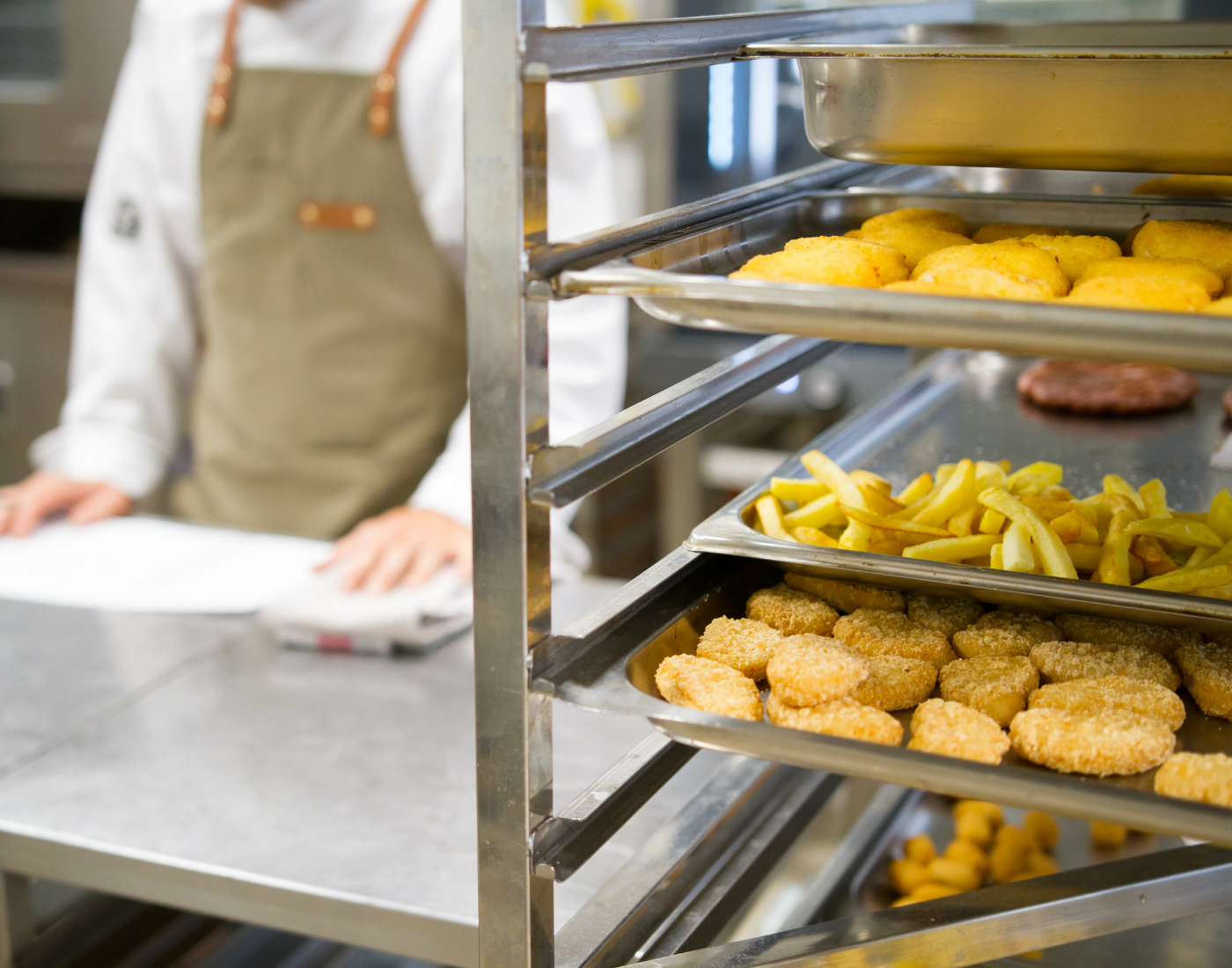High-fat foods contain lots of calories, which can lead to weight gain. This in turn can lead to type 2 diabetes, heart disease and some cancers. Reducing saturated fat intake can lower blood cholesterol and reduce the risk of heart disease.
- Use a healthier oil for frying like rapeseed or sunflower oil as these contain less saturated fat.
- Use lean mince or drain off the fat, trim excess fat from meat and remove skin from chicken whenever possible.
- Offer to grill or bake food instead of frying (e.g. grilled fish, bacon and sausages) and consider making this the default cooking option. State the option clearly on your menu and train your staff to offer this option. Some customers prefer the option and it’s healthier.
- Use lower fat varieties or smaller amounts of these products;
cheese - swap to reduced fat hard cheese or cheese naturally lower in fat, like Edam, or use less hard cheese.
cream - try single instead of double cream, half-fat crème fraîche or, better still, lower fat plain yoghurts.
milk - use skimmed, 1% fat or semi-skimmed as a default.
butter/spreads - use low or reduced fat spreads or use less butter.
yoghurt - choose low fat or fat free plain natural yoghurts.
mayonnaise - swap to light mayonnaise, it has up to 60% less fat.
dressings - choose light varieties or use less oil in homemade dressings.
- If you need to deep fat fry, for the best results.
Ensure the oil is heated to the correct temperature (160-165°C if you have a high efficiency fryer or 175°C if you have a traditional fryer). Too low and it will absorb too much fat, too high and it will spoil the oil.
Avoid frying food more than once. Par-frying, double or triple cooking and reheating food in oil increases the fat content of the food.
Bang, shake and drain off any excess fat. This can reduce fat absorption by 20%.

